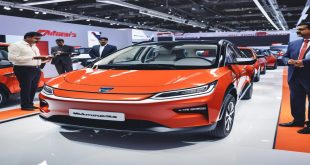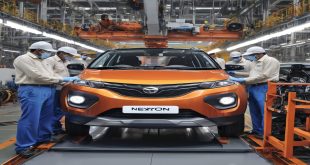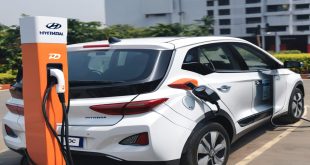Presenting a hydrogen-powered Grenadier 4×4 at the UTAC Millbrook test center near Bedford England is INEOS Automotive’s audacious move towards sustainable automotive technology. This development which was presented at the Roadmap to Decarbonization event demonstrates the company’s dedication to investigating hydrogen as a competitive fuel substitute for EVs and conventional fuels.
With its performance on steep and difficult tracks the Grenadier—a vehicle renowned for its tough off-road abilities—showcased how hydrogen fuel cells can preserve the power and longevity that come with conventional combustion engines. The development of a hydrogen demonstrator car is an obvious thing to do according to INEOS Automotive CEO Lynn Calder who highlighted the significance of this project by saying it will demonstrate that a net-zero version of the Grenadier is possible without sacrificing performance.
Calder was open about the difficulties that still lie ahead even in spite of the encouraging demonstration. There are several obstacles including the high cost of producing hydrogen and the dearth of refueling stations especially in the UK. Although the technology is ready she acknowledged that there is currently insufficient infrastructure to enable the widespread adoption of hydrogen vehicles. As a result, it is not anticipated that the hydrogen-powered Grenadier will be commercially available this decade.
All that is released in hydrogen fuel cells is water vapor in the process of converting hydrogen and oxygen into electricity. Hydrogen cars are an appealing choice for lowering carbon footprints because of this clean energy method. The viability of widespread adoption is currently hampered by the small number of hydrogen refuelling stations worldwide—just 921 as of the end of last year with just six in the UK. Though much more investment is required globally nations like China and Germany lead the way in hydrogen infrastructure.
In the hydrogen sector, INEOS which is headed by British billionaire Jim Ratcliffe is not a newcomer. The corporation produces a significant amount of hydrogen mostly as a byproduct of its chemical manufacturing operations. Because of this experience, INEOS is well-positioned to innovate in the hydrogen automotive industry. Calder did point out that before hydrogen cars can seriously compete with electric vehicles (EVs on a large scale) there needs to be a significant improvement in infrastructure and a reduction in costs. By 2027 INEOS Automotive intends to launch the Fusilier an electric four-wheel drive vehicle.
This action is in line with worldwide electrification trends which are being fueled by emissions regulations on motor vehicles. The government of the United Kingdom for example has set lofty goals to outlaw the sale of new gasoline and diesel vehicles by the year 2035 a deadline that has drawn criticism for its practicality. Automakers are investigating different technologies to meet strict emission standards and the industry as a whole is under tremendous pressure to decarbonize.

Vehicles powered by hydrogen are already being produced by firms like Hyundai Toyota and Renault which adds to a diverse strategy for lowering automotive emissions. The pragmatic approach taken by INEOS in navigating the shift to greener transportation is reflected in its dual focus on hydrogen and electric vehicles. Industry experts emphasize the need for significant infrastructure investments despite the positive outlook for hydrogen technology.
In order to hasten the shift Paul Morozzo a senior transport campaigner for Greenpeace UK supports an extensive network of EV charging stations as well as higher taxes on dirty cars. He contends that although hydrogen has potential the current deficiency in refueling infrastructure makes it impractical for use in mass transit.
A further factor influencing the UK’s trajectory towards net-zero emissions could be the result of the forthcoming general election. The Labour Party which is expected to win has come under fire for allegedly cutting back on funding for green infrastructure. In order to guarantee that the nation meets its climate targets environmental advocates emphasize the significance of having ambitious and consistent policies.
In summary,
The move by INEOS Automotive to produce hydrogen-powered automobiles is a big step in the direction of environmentally friendly automotive innovation. The Grenadier hydrogen demonstrator shows off the potential of hydrogen fuel cells but there are many obstacles in the way of their widespread use. To fully realize hydrogens’ potential as a cornerstone of future mobility investment in infrastructure cost reduction and supportive policies are essential. INEOS is at the forefront of the automotive industry’s green revolution as it navigates these complexities thanks to its dual focus on hydrogen and electric vehicles (Yahoo Asharq Al-Awsat The Peninsula Newspaper).



